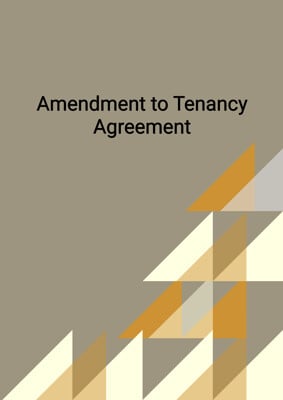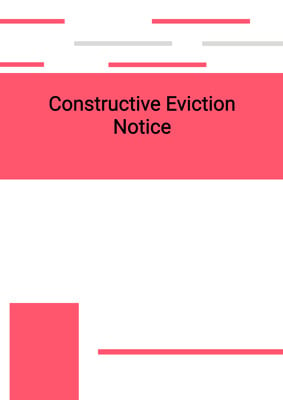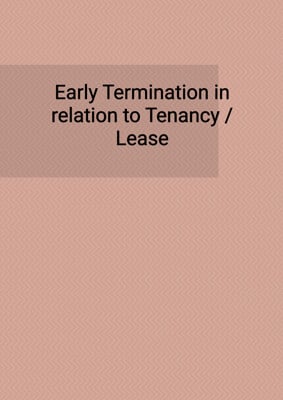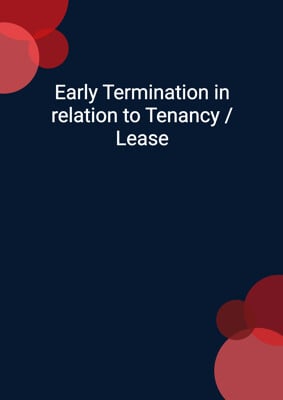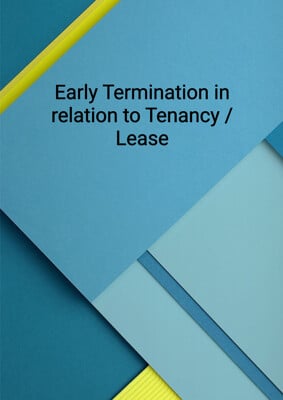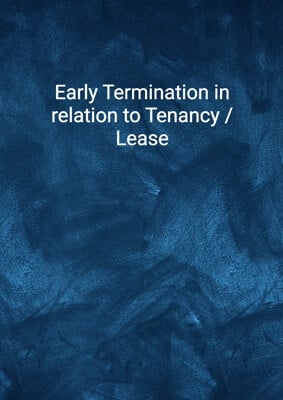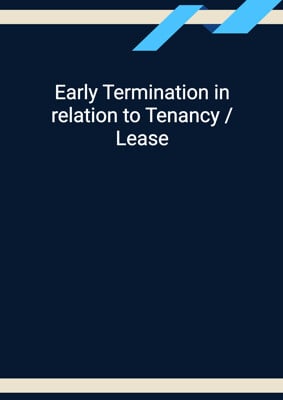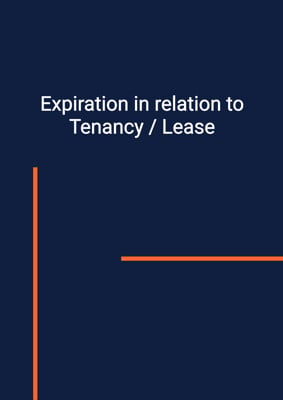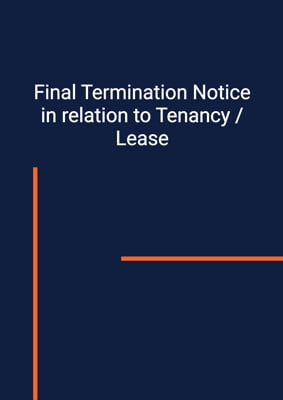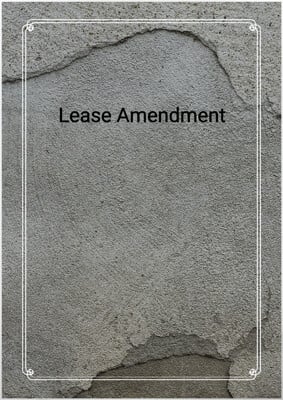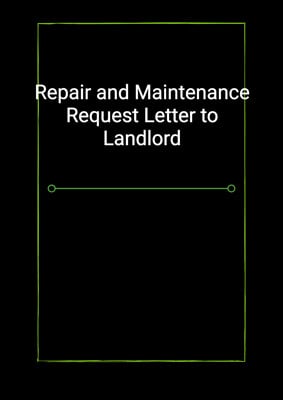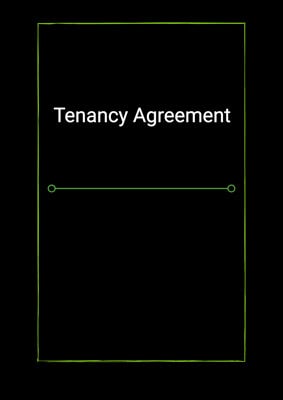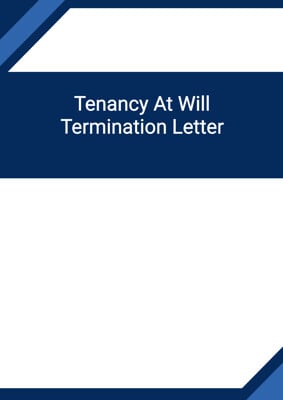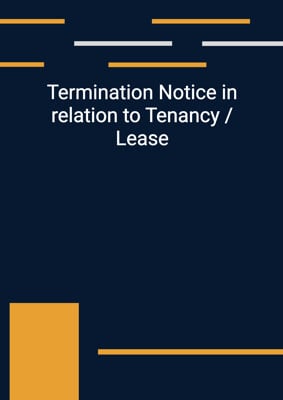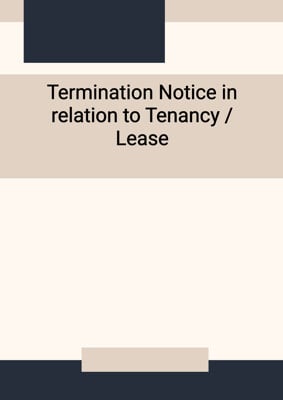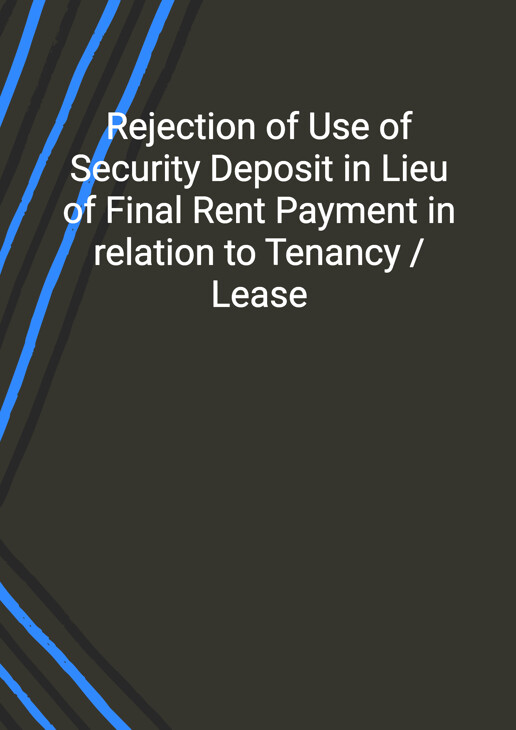
Rejection of Use of Security Deposit in Lieu of Final Rent Payment in relation to Tenancy / Lease
Termination Notice
In relation to a lease / tenancy /rental, the tenant has indicated that that he/she will not pay rent for the final months by deducting from the security deposit. This is the formal rejection from the Landlord that this approach is unacceptable.
How to Tailor the Document for Your Need?
01
Create Document
Click "Create Document" button and the document will be prepared with your account details automatically filled in.
02
Fill Information
Please fill in any additional information by following the step-by-step guide on the left hand side of the preview document and click the "Next" button.
03
Get Document
When you are done, click the "Get Document" button and you can download the document in Word or PDF format.
04
Review Document
Please review the document carefully and make any final modifications to ensure that the details are correct before sending to the addressee.
Document Preview
Document Description
The document titled 'Rejection of Use of Security Deposit in Lieu of Final Rent Payment in relation to Tenancy / Lease' is an important document that addresses the termination of a tenancy agreement and the refusal to accept the use of the security deposit as the final rent payment. The document begins with the account holder's information, including their first name, last name, and address. It then includes the name and address of party 1, who is the tenant in the tenancy agreement.
The purpose of this document is to inform party 1 that they are required to vacate the premises on or before the termination date specified in the tenancy agreement. It states that the landlord does not accept the deduction from the security deposit in lieu of rent payment for the final months. The document emphasizes that the security deposit is meant to protect the landlord from damages, unpaid rent, or bills related to the premises.
The document further states that legal action will be taken if party 1 fails to pay the rent for the final months. It also requests party 1 to pay any outstanding rent, as well as water, electricity, and other utilities until the termination date. The document emphasizes the need for party 1 to provide vacant possession of the premises in the same repair and condition as when it was first leased.
Finally, the document mentions that the return of the deposit is subject to any rightful claim of the landlord against party 1 for any breach, non-observance, or non-performance of the agreement's stipulations, terms, or conditions.
In summary, this document serves as a formal notice to party 1 regarding the termination of the tenancy agreement and the refusal to accept the security deposit as the final rent payment. It outlines the consequences of non-payment and emphasizes the importance of fulfilling all obligations until the termination date.
How to use this document?
1. Inform party 1: Begin the document by providing the account holder's information and the name and address of party 1, who is the tenant in the tenancy agreement.
2. State termination date: Clearly state the termination date by which party 1 is required to vacate the premises.
3. Reject use of security deposit: Clearly state that the landlord does not accept the deduction from the security deposit in lieu of rent payment for the final months.
4. Emphasize purpose of security deposit: Explain that the purpose of the security deposit is to protect the landlord from damages, unpaid rent, or bills related to the premises.
5. Mention legal action: Inform party 1 that legal action will be taken if they fail to pay the rent for the final months.
6. Request payment of outstanding rent: Request party 1 to pay any outstanding rent, as well as water, electricity, and other utilities until the termination date.
7. Emphasize condition of premises: Emphasize the need for party 1 to provide vacant possession of the premises in the same repair and condition as when it was first leased.
8. Highlight claim against party 1: Mention that the return of the deposit is subject to any rightful claim of the landlord against party 1 for any breach, non-observance, or non-performance of the agreement's stipulations, terms, or conditions.
9. Sign off: Conclude the document with the account holder's name.
Note: It is important to consult legal professionals or relevant authorities for specific guidance and to ensure compliance with local laws and regulations.
Not the right document?
Don’t worry, we have thousands of documents for you to choose from:
